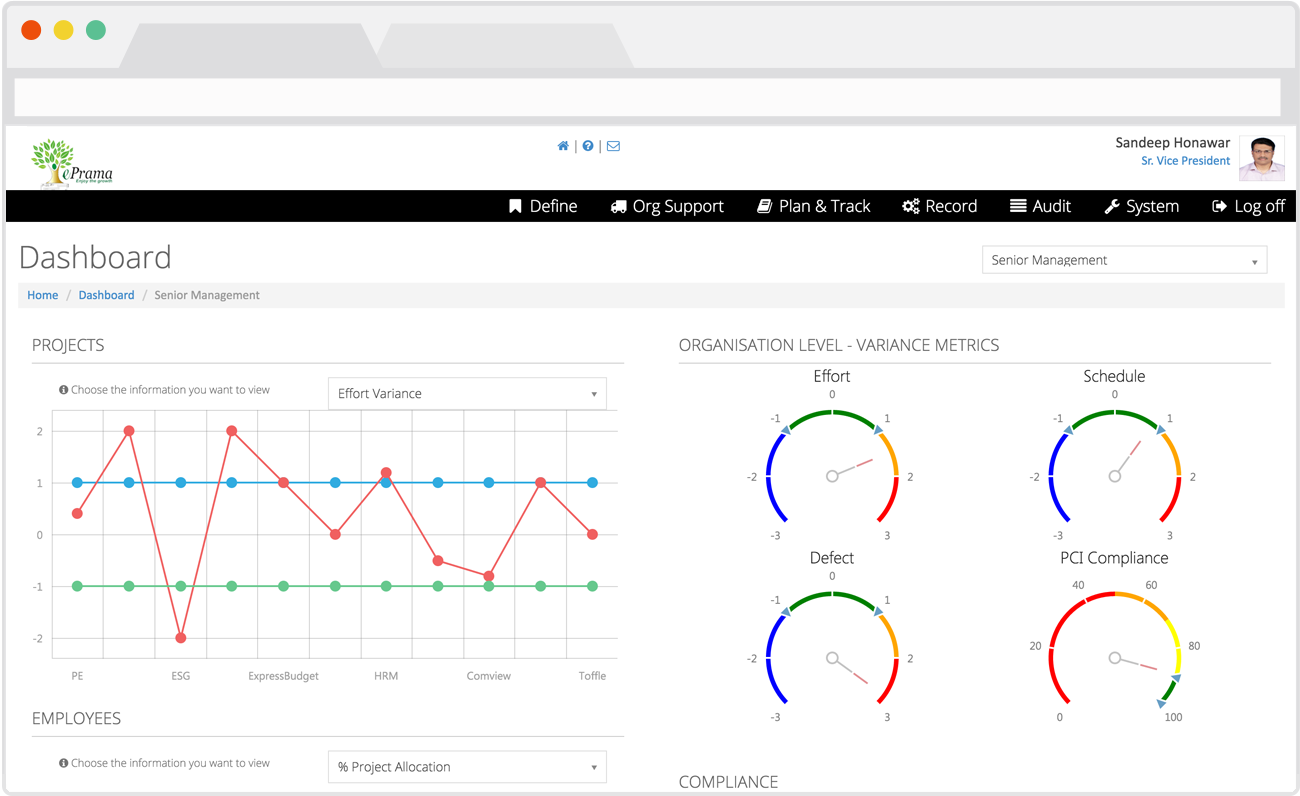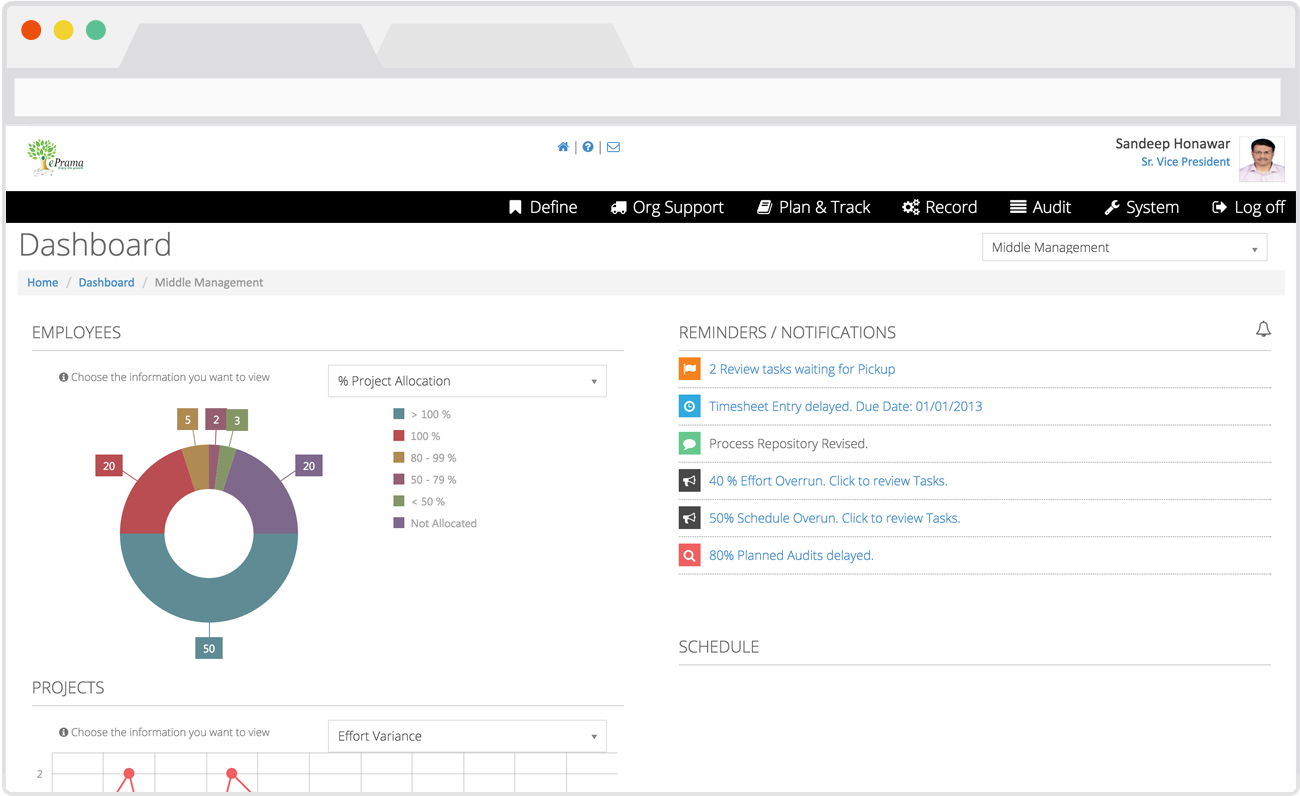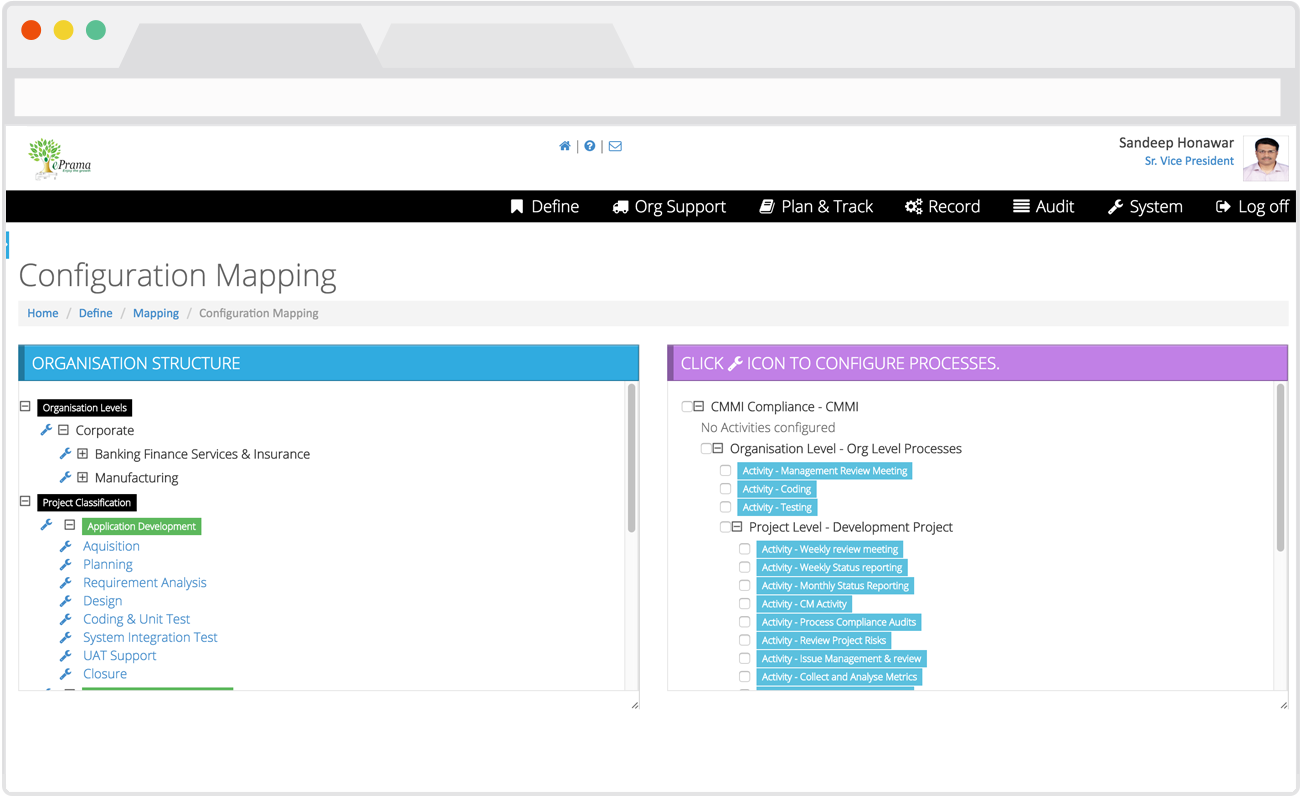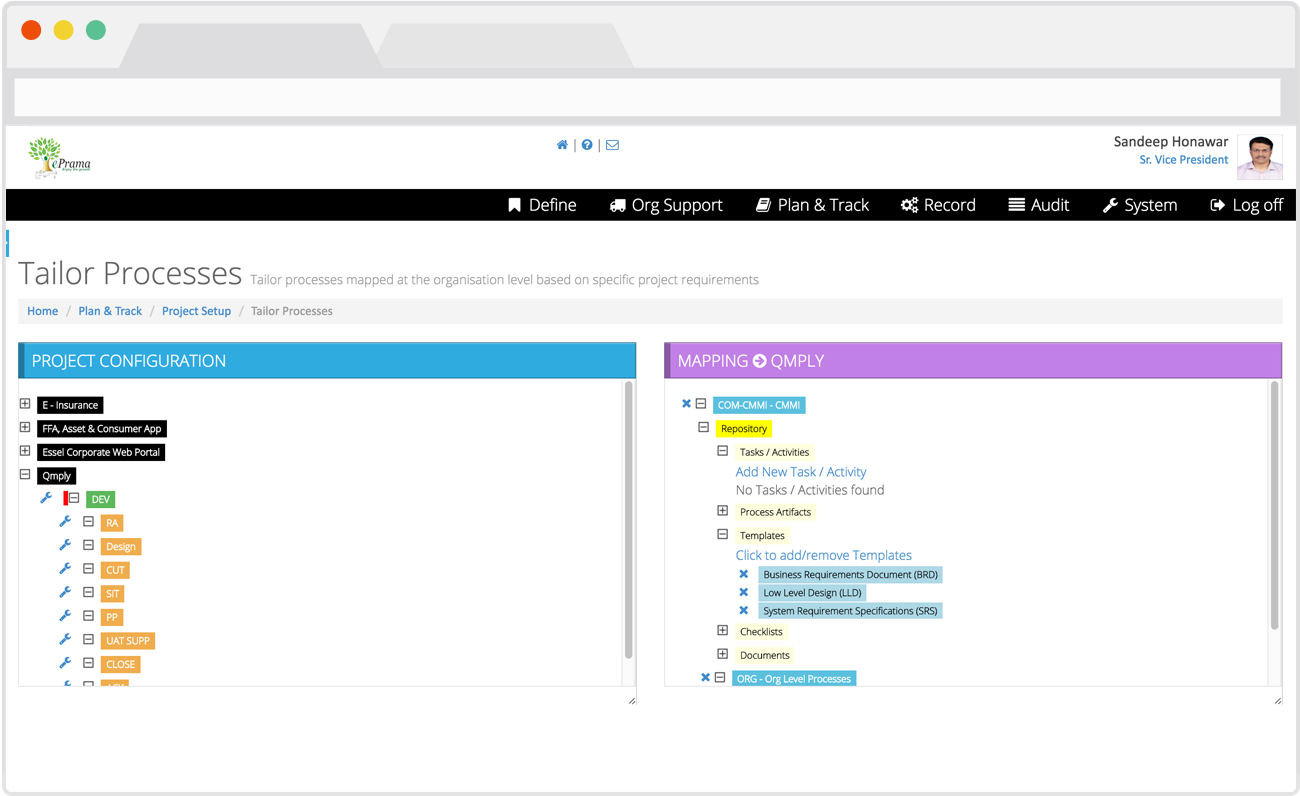
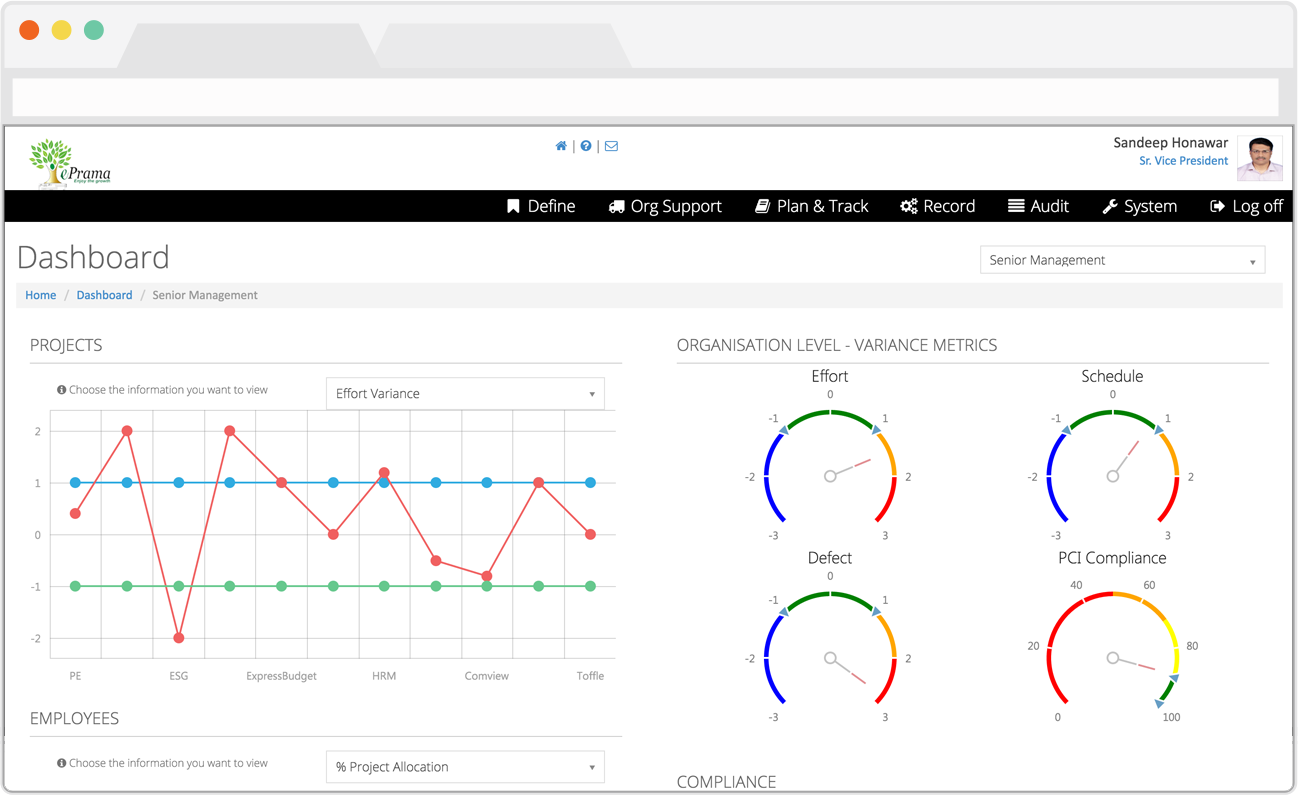


Business Purpose
A successful organization is made up of a good combination of competent people and efficient processes. Though it may not always be possible to get all good people on board, it is possible to put efficient processes in place.
Efficient processes and measurements helps an organisation to evaluate, improve and evolve the way in which business conducts with an aim to meet business objectives. It is often seen that an efficient process framework is usually in place on paper, however, it does not meet its objective due to ineffective and inconsistent use across the organisation. Hence, process definition is just one and relatively easier aspect of the solution, the major and more significant aspect is its successful implementation and consistent use.
Process implementation demands lot of manual effort in terms of monitoring, review and control. Qmply enforces and ensures process implementation by using automated monitoring and control and empowering the organisation with required information, reports, trends and timely alerts for effective enforcement of processes.
Features
This allows you to configure the business entities & groups (functional units, business domains, physical locations, and branches), process roles & designations, employee information and role base general task.
This feature allows the user to define a process framework linking it to the business functions and the roles and responsibilities of people executing it. It allows the user to create and maintain all supporting information like process artifacts, template, checklists, guidelines and other documents that are needed for recording, verification and deriving quantitative and qualitative data.
Documents supporting the process framework can be classified as process artifacts, templates, checklists and any other reference document which can be created using this feature and publishing the artifacts to the relevant users.
Projects activities can be planned using project plans and tasks can be allocated project members. The planned tasks can then be tracked for progress and closure. Project member can record the time spent on assigned tasks in the time sheet and fill relevant process recordings as a part of their task. This feature provides all project management features like project planning, tracking & control and reports.
Process tailoring is applicable to projects that need deviation or change in processes that are mapped at an organization level. Here the mapped processes can be excluded or new processes can be included for a particular project as per its requirement.
Planned activities and actual work can be measured in terms of effort and schedule using time sheet entries recorded by employees. Similarly metrics can also be derived based on the process compliance audits, their observations and closure. Some examples can be, Schedule variance, Effort variance, Defect variance, Process Compliance, Billable/Buffer distribution, Bench percentage, Resource utilization etc.
Qualitative and quantitative reports and measurements are accessible in the application in various forms and formats, either textual or graphical, to empower the user to make important decisions towards achieving business goals.
Business Benefits
- Quantitative data across different levels measuring business performance.
- Process compliance index, comparison reports, trend analysis, decision making information
- Effective enforcement and implementation of organizational processes
- Dashboards that enable effective work and time management
- Notifications highlighting critical issues and ensuring timely action.

